A country’s national flag is a patriotic symbol that bears deep references to its national history and values. Flags typically have distinct colors with specific meanings. Blue and white are two colors that are quite common flags. While many flags have these colors, their design is usually unique. Similarly, the meaning behind each color is also unique to each country. Here’s a list of countries with blue and white flags and what they mean.
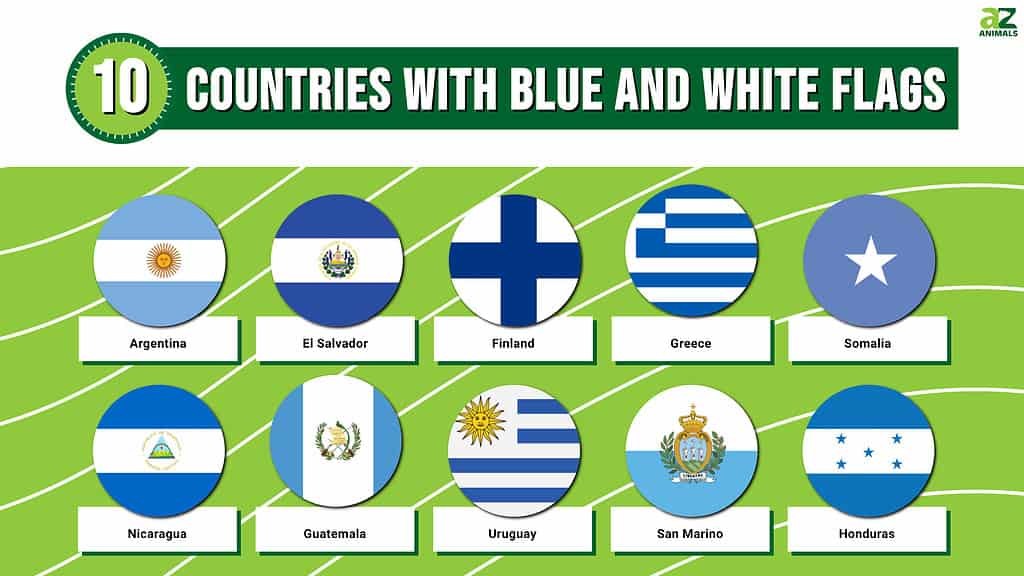
Argentina
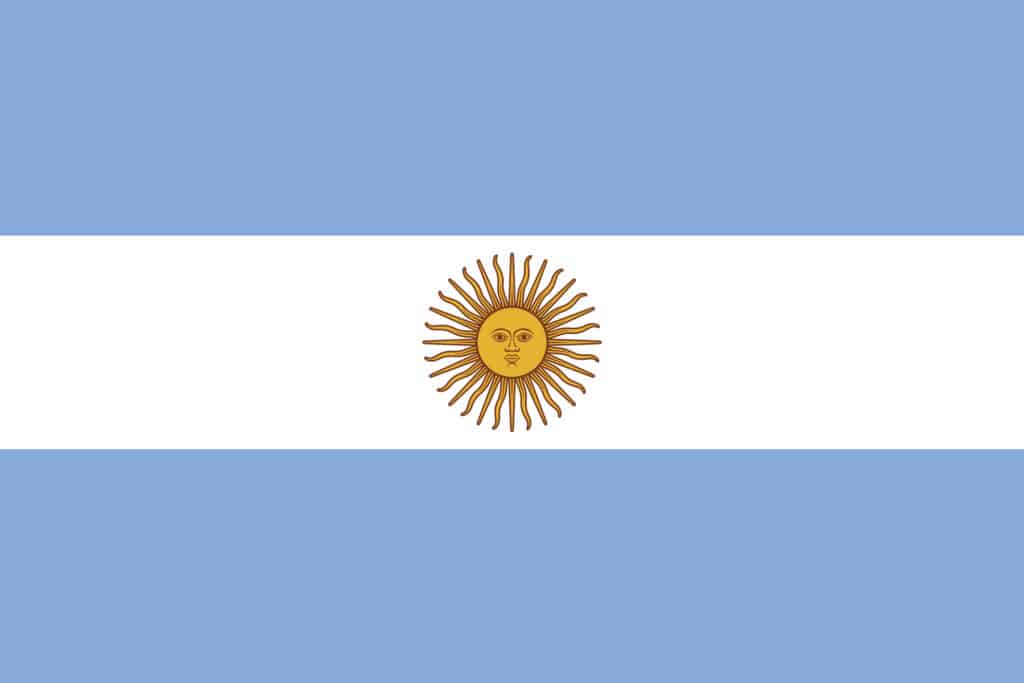
The flag of Argentina is a beautiful shade of blue with a Sun of May emblem in the middle of the white stripe.
©iStock.com/bodrumsurf
Many flags all over the world have links to independence and revolution, and Argentina‘s flag is one of them. The Gadsden flag is another classic example of a flag associated with the struggle for independence in another part of the world. Of course, this flag is not blue and white, so it doesn’t belong to this list.
Argentina’s national flag consists of three parallel bands of blue and white colors with the Sun of May emblem at the center. The flag’s blue color represents Argentina’s blue sky, while white symbolizes independence. Manuel Belgrano designed the flag during the Argentine independence revolution against Spain.
The flag was raised for the first time on February 27, 1812. The original flag had only blue and white stripes, and the golden sun was added later. Argentina still uses a blue and white flag that does not have a golden sun on it. This flag is ornamental and is often hoisted under the Official flag.
El Salvador
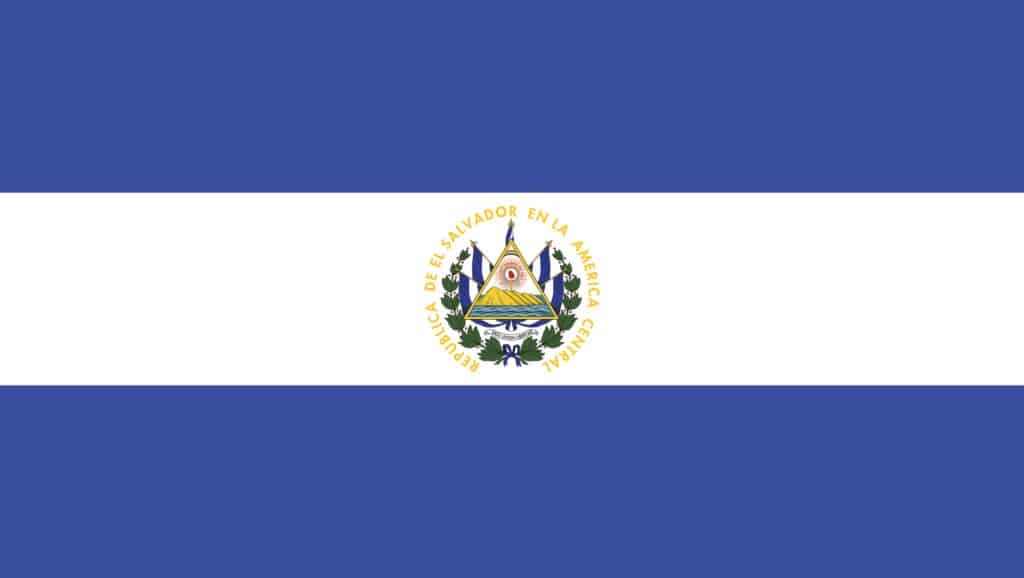
The flag of El Salvador has been its national flag since 1912.
©iStock.com/bodrumsurf
El Salvador’s national flag is a triband with blue, white, and blue colors. The flag also has the country’s coat of arms at the center. The blue color is important to El Salvador’s identity. The country cultivates the Indigo plant, which is used in the production of blue dye. The blue color is often taken to represent the oceans that surround Central America. The white color is symbolic of peace and solidarity. The flag was adopted as the country’s official flag on May 27, 1912.
Finland

The national flag of Finland was adopted in 1918 after Finland’s independence from Russia was decl
©Mr.Yankittaphak Phoyalo/Shutterstock.com
Finland’s national flag is often referred to as the blue-cross flag. The origin of the flag dates back to the twentieth century. It was adopted officially as the country’s national flag on May 29, 1918, following its independence from Russia. The flag’s design includes a large blue Nordic cross on a white background. It also has a coat of arms at the center.
The white color of the flag is symbolic of the snow that covers the entire country in Winter. The blue color, on the other hand, is symbolic of the sky and the numerous lakes found in the country. The cross is an ancient symbol of Christianity. In addition to being used on the national flag, the national colors of blue and white are used in numerous Finish provincial flags and military flags.
Greece

The Greek flag is a fascinating array of blue and white!
©iStock.com/ayvengo
The national flag of the country of Greece features 9 horizontal stripes with white and blue alternating colors. There’s also a blue canton on the upper hoist-side of the flag with a white cross on it. The white cross is symbolic of the oldest established religion in the country, which is Orthodox Christianity. The flag was officially adopted on January 13, 1822.
There are conflicting theories on what the 9 blue and white stripes represent. A theory states that each stripe stands for the nine letters of the word “freedom”. However, another theory claims that the bands represent the 9 goddesses of science, art, literature, and civilization. A much simpler theory is that the colors are symbolic of the Greek sea or sky.
Somalia

When compared to the Greek flag, the flag of Somalia is quite simple.
©iStock.com/Burak Ceyhan
Somalia’s national flag was officially adopted on October 12, 1954. Mohammed Awale Liban is often credited as the designer of this flag. The white color of the flag represents unity, while the blue is a representation of the Indian Ocean and the blue sky. The flag also has a five-pointed star representing the country’s five regions. The Somali national flag used to be an ethnic flag of the Somali people before it was adopted for the republic.
Nicaragua

The flag of Nicaragua’s design was inspired by the flags of the Federal Republic of Central America and the flag of Argentina.
©iStock.com/Juan Ignacio Rodríguez Moronta
The Nicaraguan national flag is a tri-banded flag with a white stripe running horizontally across the center and blue stripes above and below it. The flag’s design was inspired by the flags of the Federal Republic of Central America and the flag of Argentina. The blue stripes are symbolic of the Pacific Ocean and the Caribbean sea. As with many national flags, the white band is a symbol of peace. The flag was adopted on September 4, 1908. However, it wasn’t formalized as the official national flag until August 27, 1971.
Guatemala

The flag of Guatemala features three vertical stripes of blue and white.
©bodrumsurf/Shutterstock.com
Fondly referred to locally as the “Pabellón Nacional”, Guatemala‘s flag has a vertical white band between two sky-blue bands. It has a national coat of arms at the center. The flag’s design represents the country’s unique location between the Atlantic and Pacific oceans. The white stripe also represents purity and peace. The design of the Guatemala flag was inspired by the flag of the Federal Republic of Central America, which was the country’s national flag until 1851. However, instead of horizontal bands, Guatemala’s flag has vertical bands.
Uruguay

The flag of Uruguay was inspired by the U.S. flag.
©iStock.com/-Panya-
Uruguay’s national flag is a series of white and blue stripes that run horizontally. Various meanings have been put forward for the flag’s design, but the most prominent interpretation is that the flag is symbolic of the country’s original 9 departments. The national flag of the United States was the inspiration for the design. When the flag was first adopted on 18 December 1828, it had 19 stripes. This was reviewed 2 years later, and the number of stripes was reduced to 9.
San Marino
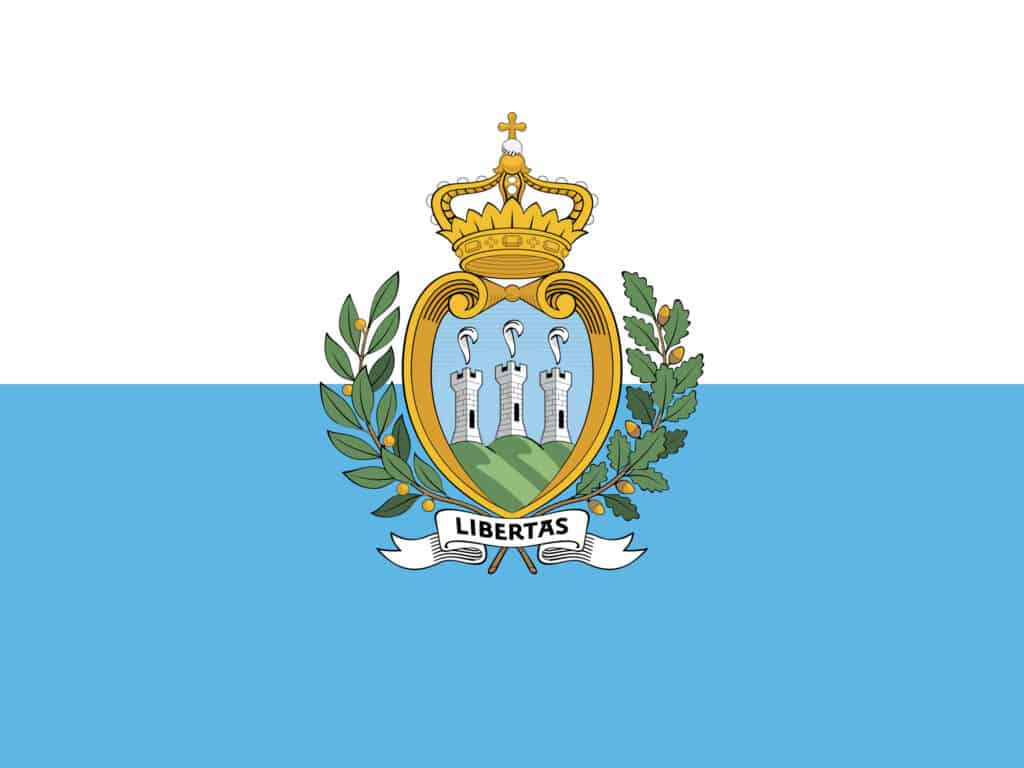
The official Flag of San Marino features the country’s coat of arms.
©iStock.com/de-nue-pic
San Marino’s national flag has two horizontal colors, white and blue, with the country’s coat of arms in the middle. The blue color on the flag represents liberty and freedom, while the color white is a symbol of peace. The colors were first used on February 12, 1797. However, the current form of the coats of arms was added on April 6, 1862. The crown on the coats of arms is a symbol of the country’s sovereignty rather than of Monarchy.
Honduras
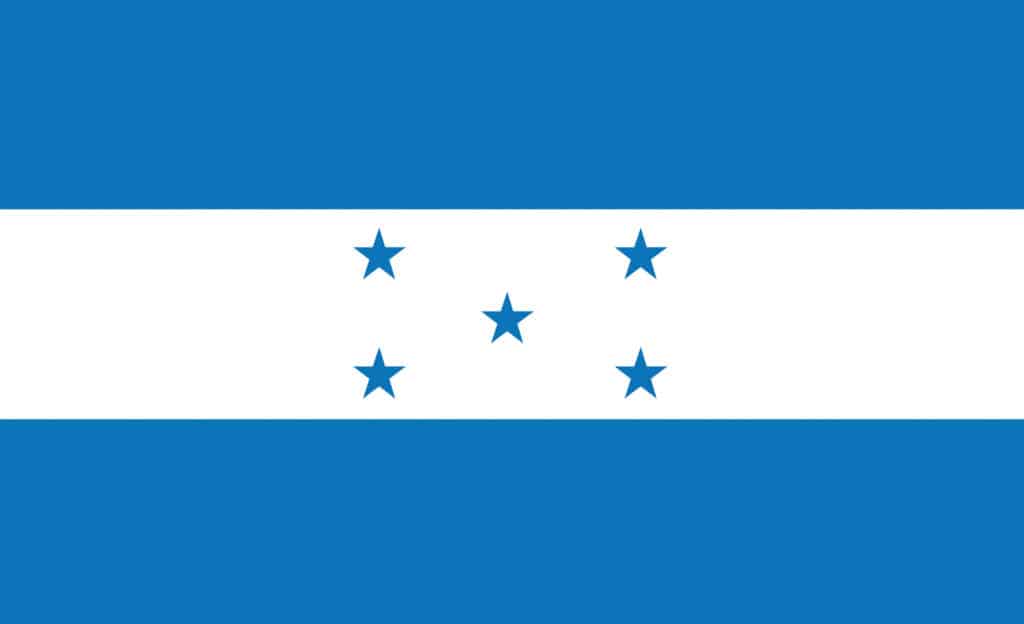
The Flag of Honduras has an intriguing design of five stars and three horizontal stripes.
©iStock.com/sebastian coll
Honduras’ national flag consists of three equal horizontal stripes of turquoise-blue and white. The flag also has 5 turquoise stars arranged in a quincuncial pattern at the center. The flag’s blue color symbolizes the Pacific Ocean and the Caribbean Sea surrounding the country. The white band is a symbol of peace and prosperity. The 5 stars represent the five original provinces of the country.
Israel
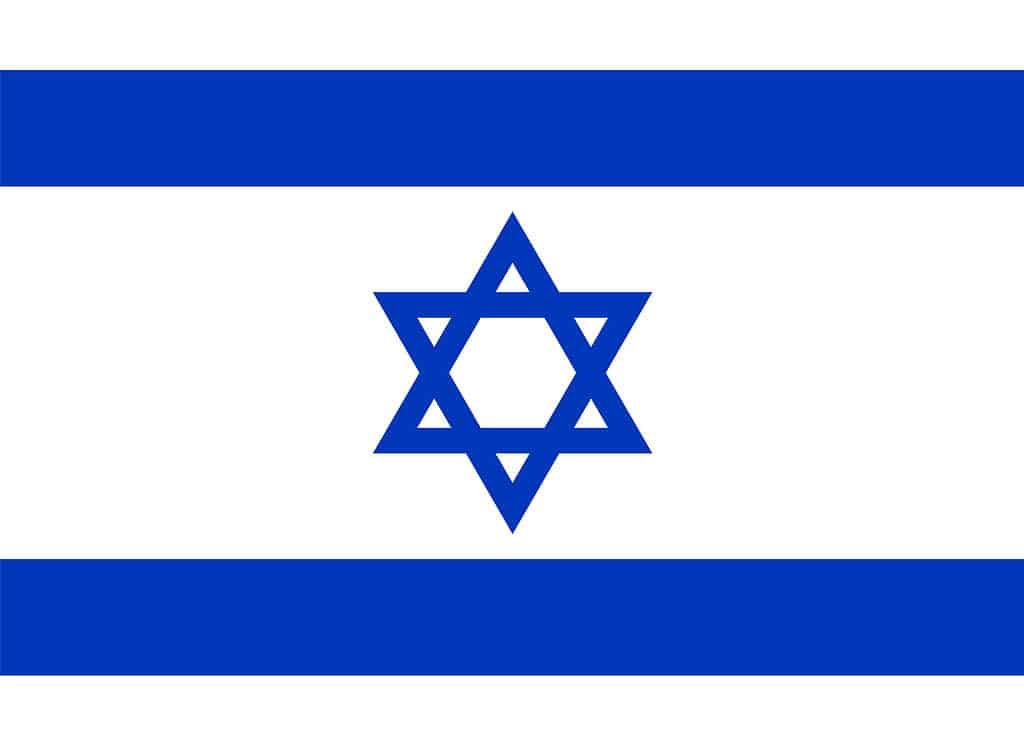
The flag of Israel features a white background, two blue stripes, and a blue hexagram at the center.
©iStock.com/Muhammad Fadlan
Israel’s flag is arguably one of the most recognized blue and white flags in the world. The stark white background features a brilliant blue Star of David and two solid blue stripes on both the top and bottom. Its blue and white colors are an iconic homage to the Jewish religion. Learn more about the flag of Israel here.
Conclusion
For many countries with the color blue on their flags, it is typically a representation of the blue sky or blue seas, while white is usually a symbol of peace. However, there are a few exceptions where the blue and white colors have meanings unique to the specific country.
Summary of 10 Countries With Blue and White Flags, All Listed
| Number | Country |
|---|---|
| 1 | Argentina |
| 2 | El Salvador |
| 3 | Finland |
| 4 | Greece |
| 5 | Somalia |
| 6 | Nicaragua |
| 7 | Guatemala |
| 8 | Uruguay |
| 9 | San Marino |
| 10 | Honduras |
The photo featured at the top of this post is © iStock.com/sezer ozger
Sources
- Wikipedia, Available here: https://en.wikipedia.org/wiki/List_of_flags_by_color_combination
- World Population Review, Available here: https://worldpopulationreview.com/country-rankings/countries-with-blue-and-white-flags
- World Atlas, Available here: https://www.worldatlas.com/articles/blue-and-white-country-flags.html
Thank you for reading! Have some feedback for us? Contact the AZ Animals editorial team.






